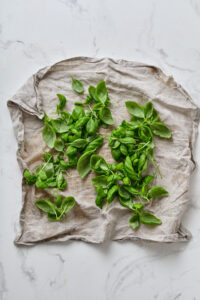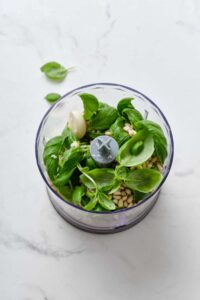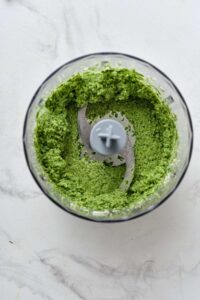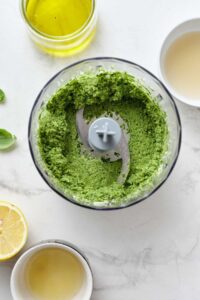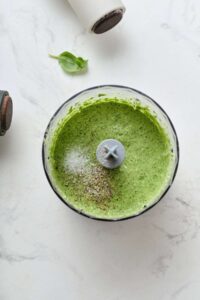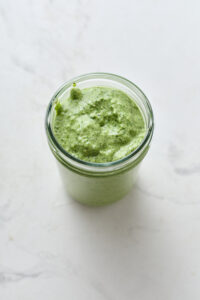Dress up any of your favorite salads with this creamy, green, and fragrant pesto dressing.
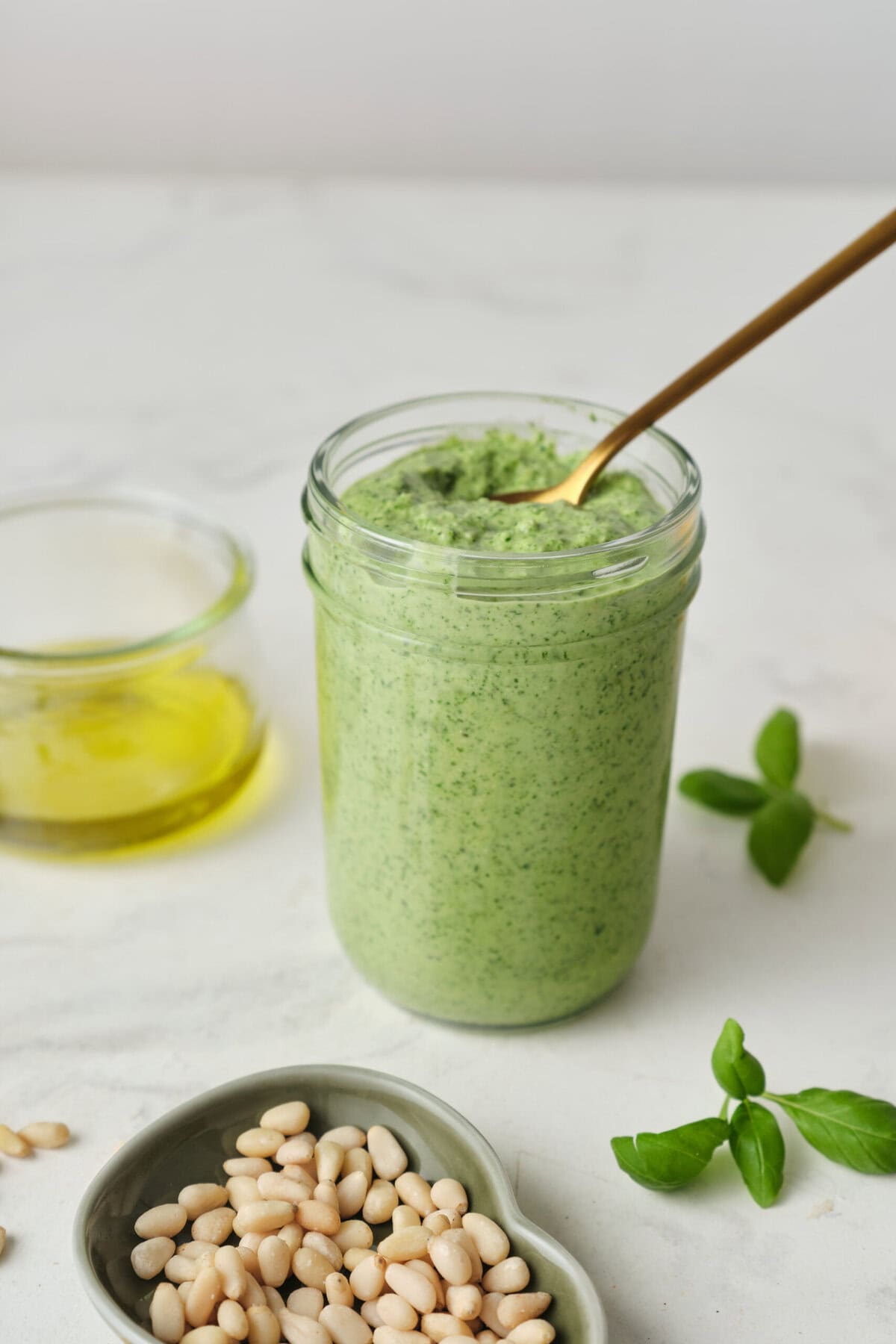
Every veggie-loving chef knows that the secret to a good salad is the dressing. One of my personal favorites is pesto salad dressing, which can transform any old mix of greens into a bright and refreshing meal. Not only that, but you can also spread pesto dressing on paninis, wraps, pasta, and more. The “pesto-bilities” are nearly endless!
While pesto originally came from 16th-century Italy, today it is one of the most beloved condiments in Italian-American cooking. The word pesto has etymological roots that mean “to pound” or “to crush,” which is fitting since pesto was originally made with a mortar and pestle. The crushed herbs and garlic in pesto dressing provide an abundance of aromatic flavor.
I had pesto for the first time as a teenager, and it was a game-changer. I never cooked the same way again. In particular, pesto salad dressing has a perfect harmony of nutty, cheesy, and slightly tangy. All of that yumminess comes from blending together fragrant fresh basil, earthy pine nuts, tangy Parmesan, garlic, citrusy lemon juice, white wine vinegar, and olive oil. With a dash of salt and pepper to your liking, the flavor profile is complete. Now it’s time to amplify your boring old salad with one of the most vibrant dressings imaginable!
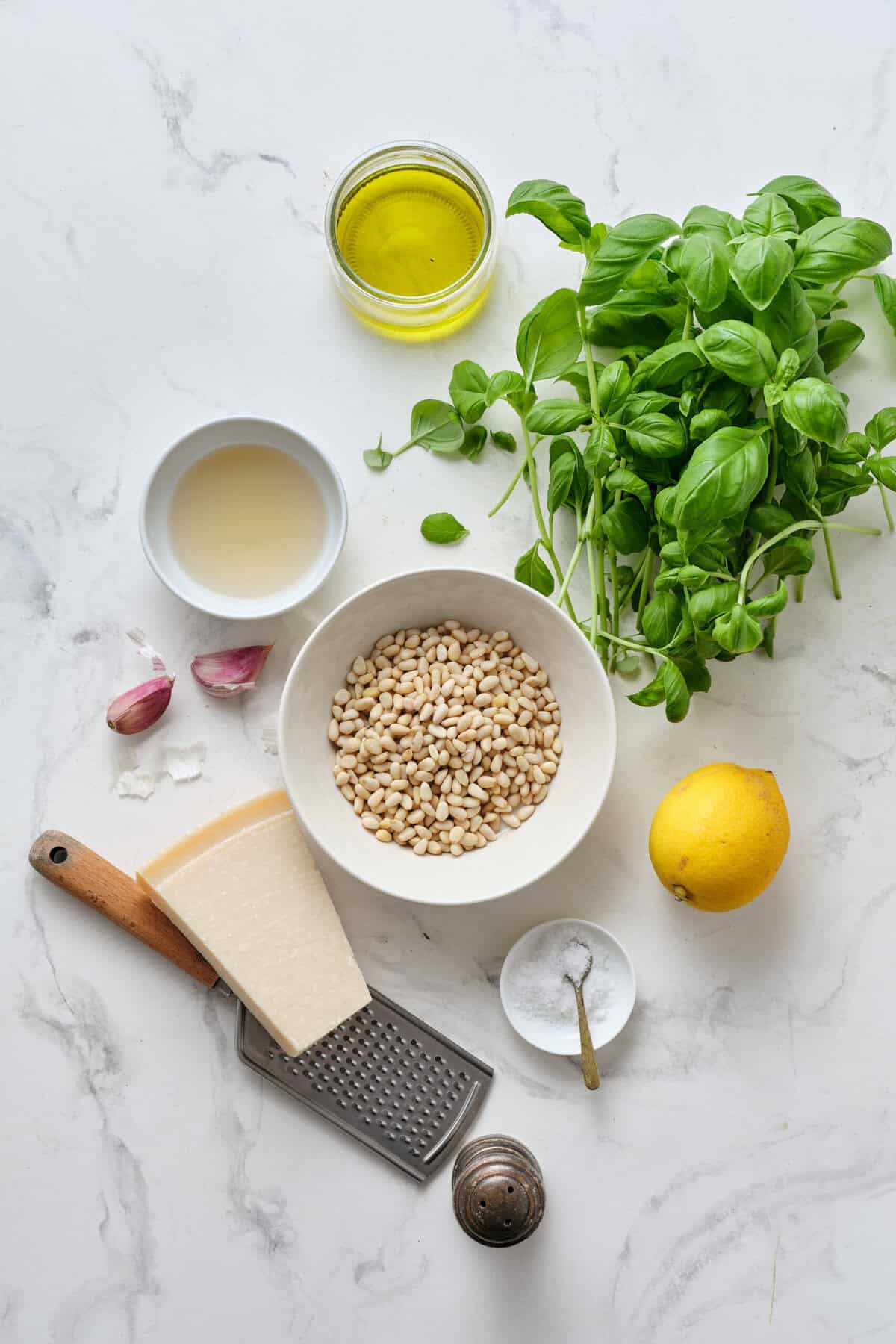
Is Pesto Salad Dressing Healthy?
This salad dressing is made with simple, clean ingredients, so it’s a fairly healthy condiment. Fresh basil packs vitamins A and C, while pine nuts provide healthy fats. If you’d like to up the protein content, feel free to mix in half a cup of Greek yogurt. Keep in mind that this will also make it extra creamy and slightly tangier. Overall, this recipe is gluten-free and vegetarian—but you could easily make it vegan by subbing in plant-based Parmesan.
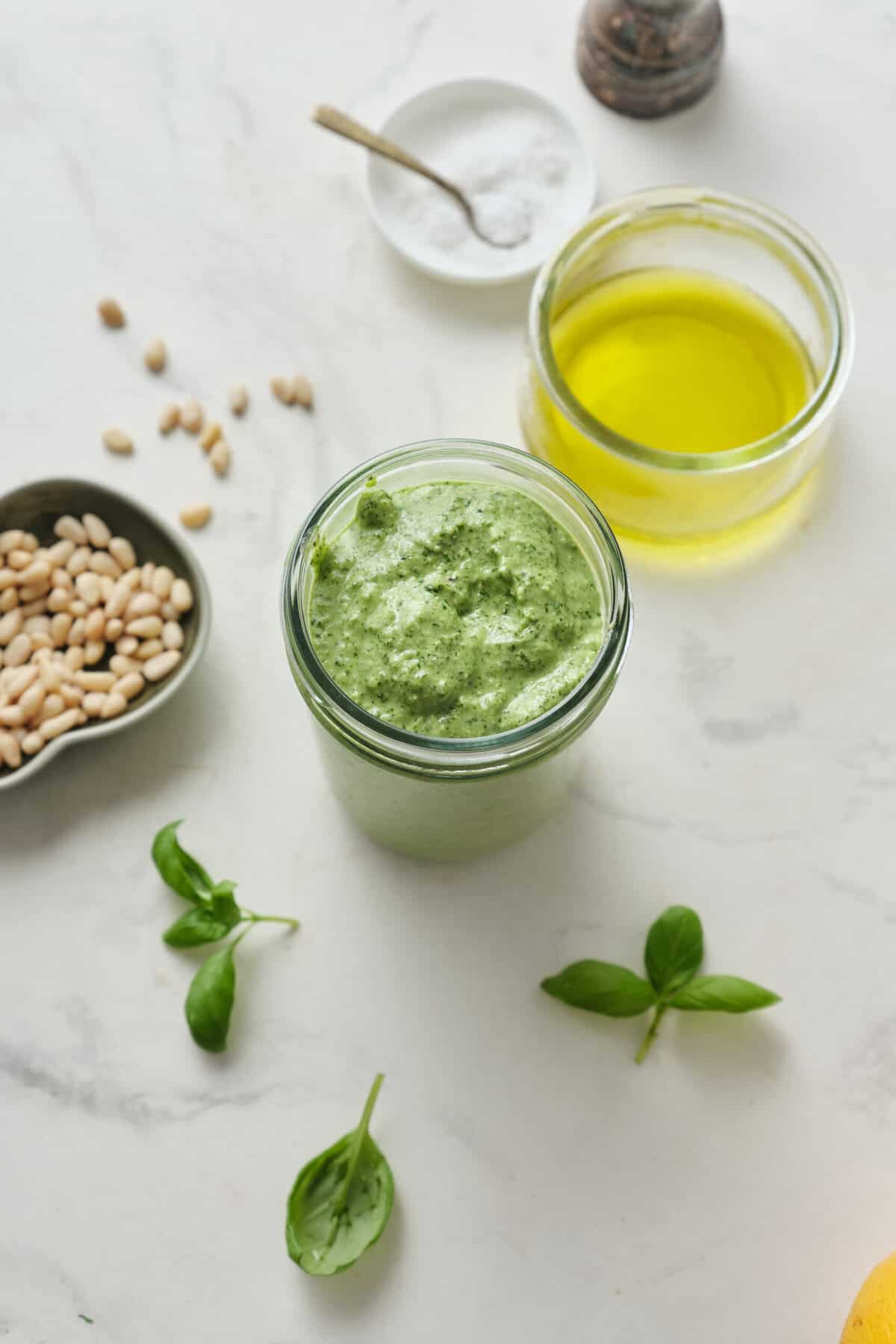
Pesto vs. Green Goddess: What’s The Difference?
While pesto and Green Goddess Dressing are similar in appearance, they have some major differences. Pesto salad dressing gets its verdant color from fresh basil, whereas the hue of green goddess comes from mixed herbs and sometimes avocado, too. One could argue that those ingredients also make green goddess more diverse in flavor, while pesto is pretty simple and straightforward. Additionally, green goddess dressing tends to be creamier than pesto when its base includes ripe avocado—a soft green fruit that blends more easily than basil leaves and pine nuts. Try each dressing for yourself to decide which you prefer.
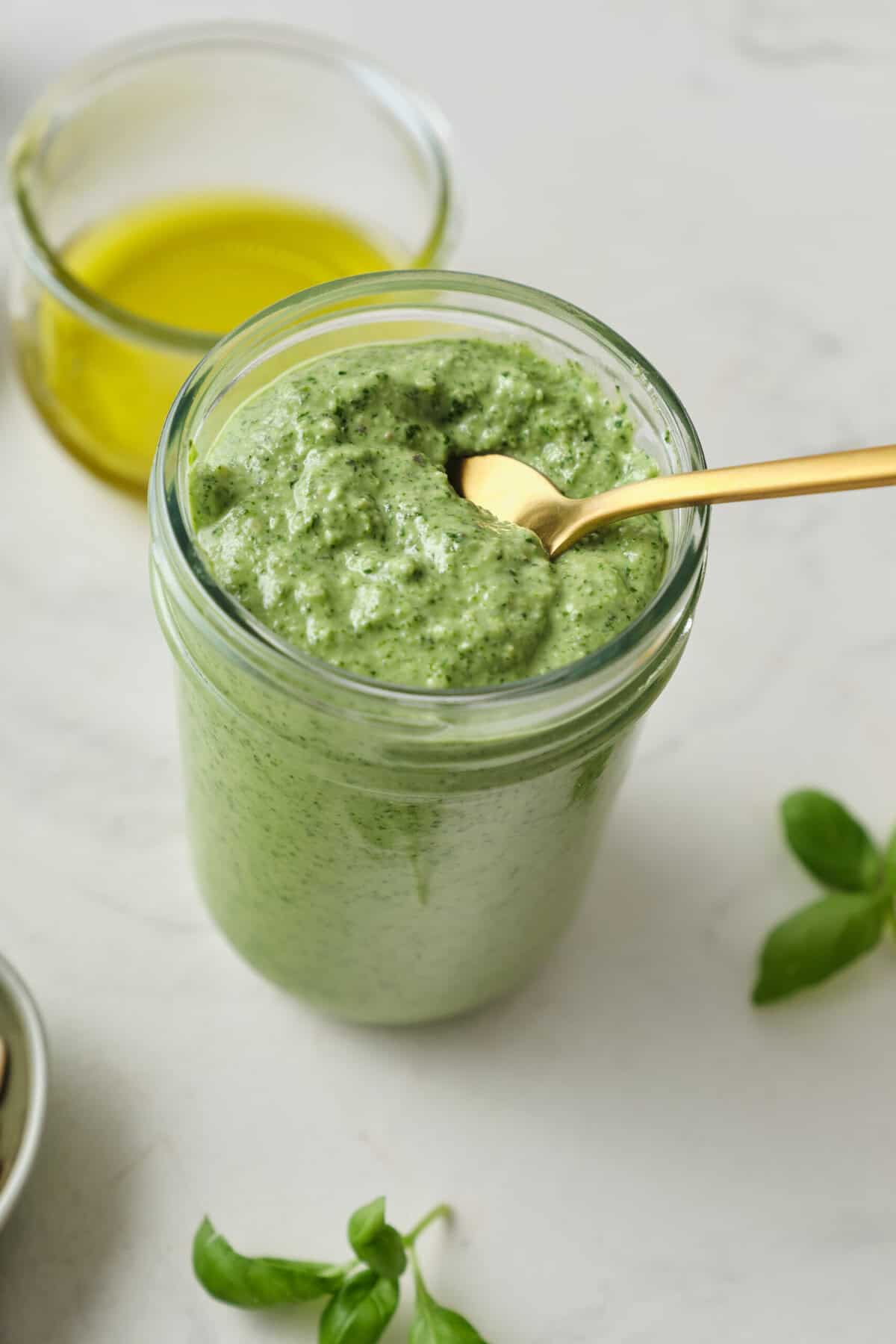
FAQs & Tips
I recommend storing leftover pesto salad dressing in a well-sealed jar. Drizzle a thin layer of olive oil on top to limit exposure to air, which can cause browning while it’s stored. In the fridge, it will last up to 5 days. For longer storage, you can pour it into ice cube trays and freeze for up to 2 months. Within that time, take out as many cubes as you want and let them thaw in the fridge overnight before incorporating them into a meal.
The key to a bright green pesto that keeps its color is limiting oxidation. This recipe relies on tangy, acidic lemon juice to inactivate the plant enzymes of basil and prevent browning. Some chefs like to blanch the basil leaves briefly before blending everything together, which can also prevent browning.
Certainly! If pine nuts aren’t your fave, you can use walnuts, almonds, or cashews. I suggest blanching the almonds or walnuts to soften them, then scraping off the skins before incorporating them into the dressing. Cashews, on the other hand, are already quite soft, and should blend fairly easily, just like the pine nuts.
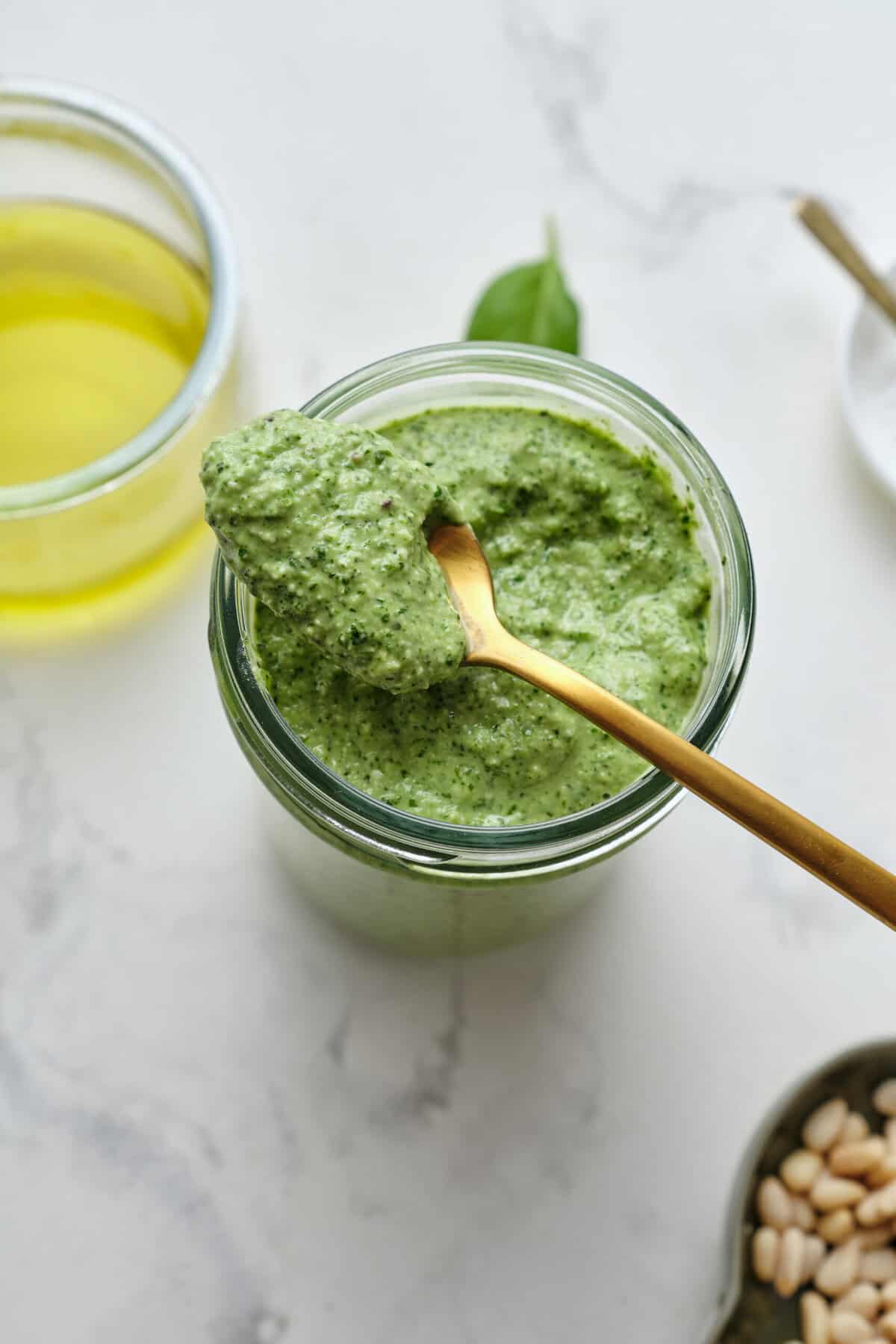
Serving Suggestions
If you haven’t thought of your ideal salad for this dressing by now, let me get your creative juices flowing. Imagine a drizzle of colorful pesto dressing on Spring Salad, Antipasto Salad, or Mint Salad. But if fresh veggies aren’t on your menu, go ahead and slather this pesto dressing on Slow-Cooker Chicken Legs, Roasted Eggplant, Salmon and Asparagus, or Garlic Toast.
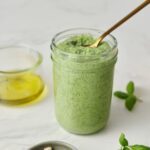
Pesto Salad Dressing
Ingredients
- 1 1/2 cups fresh basil leaves loosely packed
- 5 tablespoons pine nuts
- 3 tablespoons grated Parmesan cheese
- 2 cloves garlic peeled
- 3 tablespoons lemon juice
- 1 1/2 tablespoons white wine vinegar
- 5 tablespoons extra-virgin olive oil
- Salt and pepper to taste
Instructions
-
Wash and dry the basil leaves.

-
Place basil leaves, pine nuts, Parmesan cheese, and garlic in a food processor.

-
Pulse the mixture until finely chopped.

-
While the processor is running, gradually incorporate lemon juice, white wine vinegar, and olive oil until the dressing achieves a smooth consistency.

-
Add salt and pepper to taste, and pulse to combine.

-
Transfer the dressing to a jar and refrigerate until ready to use.

Nutrition
The post Pesto Salad Dressing appeared first on Food Faith Fitness.

